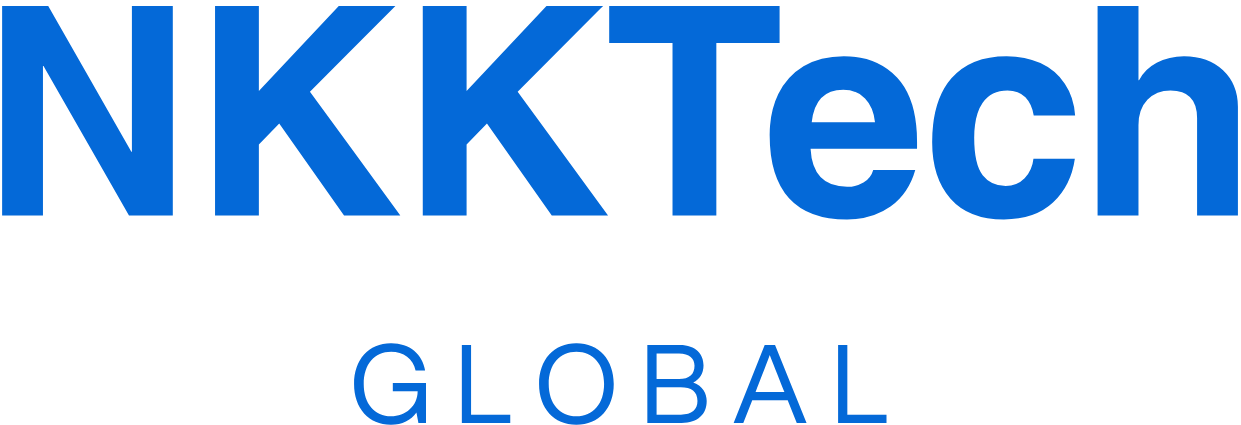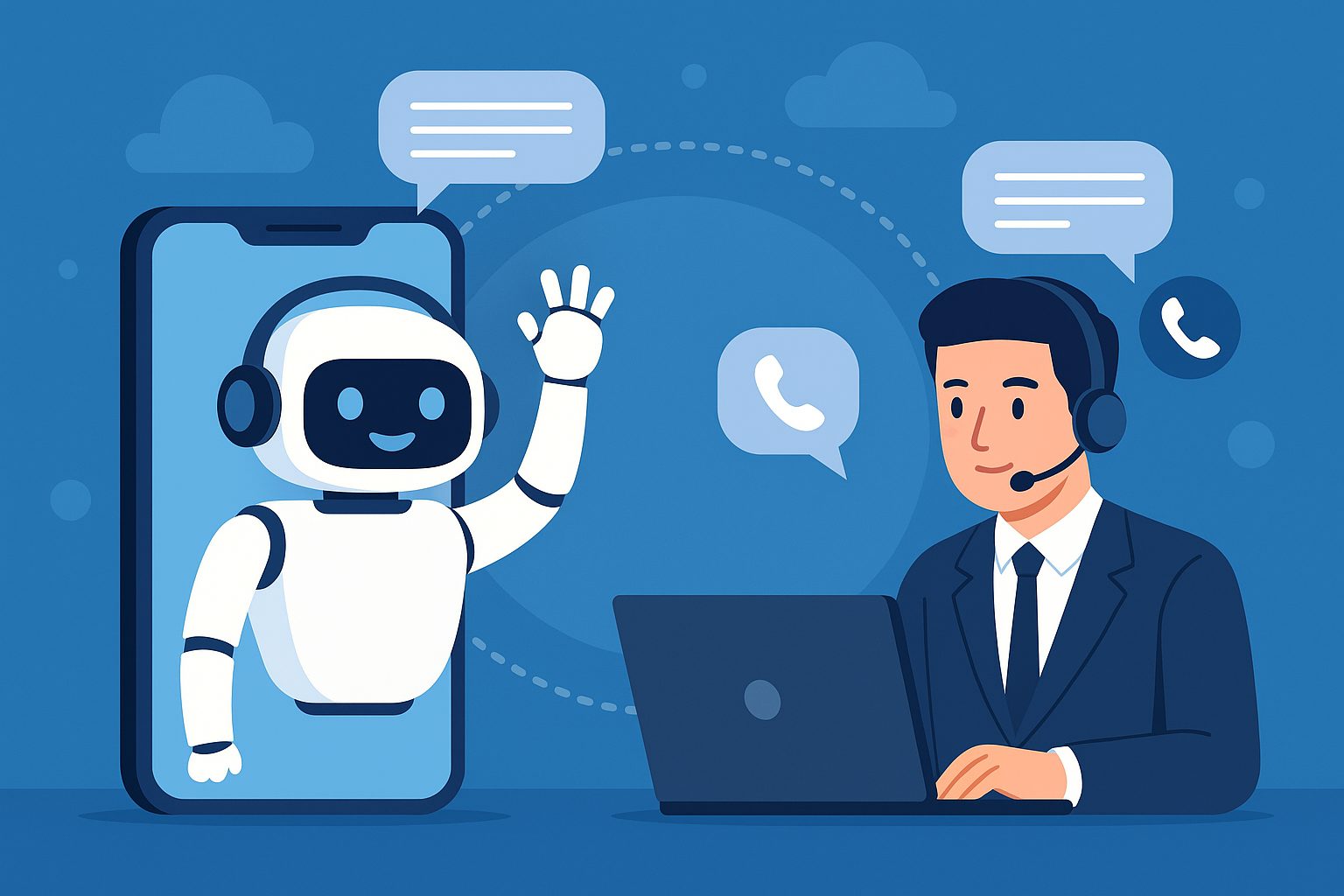Introduction
AI Chatbot Development is emerging as a dominant trend in customer service automation. One of the most pressing questions for organizations is: Can AI chatbots replace traditional business hotlines? As companies strive to optimize costs and improve customer experience, NKKTech Global provides a comprehensive analysis of the potential for chatbots to replace hotlines, highlighting both opportunities and practical challenges.
What Are AI Chatbots and Business Hotlines?
A business hotline is a dedicated phone line for handling customer inquiries and complaints in real-time. It has long been the backbone of customer service operations. In contrast, an AI Chatbot is an artificial intelligence system capable of engaging in automated conversations through natural language processing (NLP), responding to customers via multiple platforms such as websites, mobile apps, Facebook Messenger, or Zalo.
AI Chatbot Development today goes far beyond scripted responses. Modern chatbots use machine learning, contextual understanding, and CRM integration to provide personalized, scalable customer experiences.
Advantages of AI Chatbots Over Traditional Hotlines
Compared with traditional hotlines, AI chatbots offer numerous benefits that make them highly attractive to businesses:
- 24/7 Availability: Unlike human agents, chatbots can provide continuous support without downtime.
- Scalability: They can handle thousands of inquiries simultaneously without line congestion.
- Cost Savings: By reducing reliance on large teams of call center staff, chatbots lower operational costs significantly.
- Omnichannel Integration: They seamlessly integrate across digital platforms, offering consistent service experiences.
- Data Collection: Every customer interaction is logged, enabling data-driven insights into customer behavior and needs.
Limitations and Challenges
Despite their clear advantages, AI chatbots are not without limitations:
- Complex Issues: Situations that require nuanced judgment often still need human intervention.
- Emotional Intelligence: Chatbots struggle to express empathy or emotional understanding, which remains a strength of human agents.
- Upfront Costs: High-quality AI Chatbot Development demands significant initial investment in training data, AI models, and integration.
- Language & Context: In languages like Vietnamese, chatbots must be carefully trained to handle local dialects, slang, and cultural nuances.
Real-World Applications of AI Chatbots
Across industries worldwide, businesses are already seeing tangible results from AI chatbot deployment:
- Banking: Guiding customers through loan applications, card services, and transaction queries.
- Retail: Managing order tracking, return policies, and personalized promotions.
- Healthcare: Scheduling appointments, providing medication reminders, and answering FAQs.
- Education: Supporting admissions, providing course details, and assisting students with FAQs.
NKKTech Global has successfully implemented AI Chatbot Development projects for small and medium-sized enterprises, reducing hotline workloads by up to 60% while enhancing customer satisfaction rates.
Cost Comparison: AI Chatbots vs. Business Hotlines
Maintaining a traditional business hotline requires 24/7 staffing, typically involving 5–10 employees, which can cost hundreds of millions of VND per month. In contrast, AI chatbots require higher initial investments but lower long-term maintenance expenses. Within 6–12 months, the return on investment (ROI) often surpasses that of hotlines.
NKKTech Global offers scalable chatbot solutions tailored to SMEs, balancing affordability with the flexibility to expand as businesses grow.
NKKTech Global’s Implementation Strategy
NKKTech Global follows a structured four-step approach to successful chatbot deployment:
- Needs Assessment: Analyze current hotline operations and identify areas for optimization.
- Smart Script Design: Develop advanced conversation flows leveraging NLP and machine learning.
- System Integration: Connect with CRM, ERP, and internal platforms for seamless data flow.
- Monitoring and Optimization: Continuously train and refine chatbots to improve accuracy and efficiency.
Hybrid Model: Chatbots and Hotlines Together
Instead of fully replacing hotlines, many businesses adopt a hybrid model. Chatbots manage common and repetitive inquiries, while hotlines remain available for complex or sensitive cases that require human involvement. This dual system provides cost efficiency while maintaining high-quality customer experience.
The Future of Hotlines in the AI Era
Over the next 5–10 years, hotlines are unlikely to disappear completely but will evolve. They will shift from being the primary support channel to becoming specialized resources for high-level issues, while AI chatbots handle the majority of inquiries. With the rise of voicebots and advanced text-to-speech (TTS) technologies, the gap between chatbots and traditional hotlines will continue to close.
Conclusion
So, can AI chatbots replace business hotlines? The answer is: they can replace most functions, but not entirely. AI Chatbot Development provides an effective solution to reduce hotline workloads, lower costs, and improve customer experiences. However, hotlines still play a vital role in handling complex cases and building emotional connections. Businesses should view chatbots as strategic tools that complement rather than fully replace human-operated hotlines.
NKKTech Global remains committed to delivering modern, optimized AI Chatbot Development solutions tailored to the unique needs of each organization.



